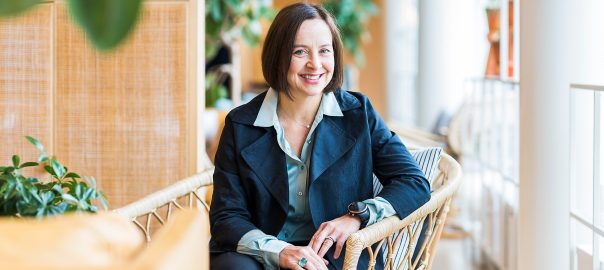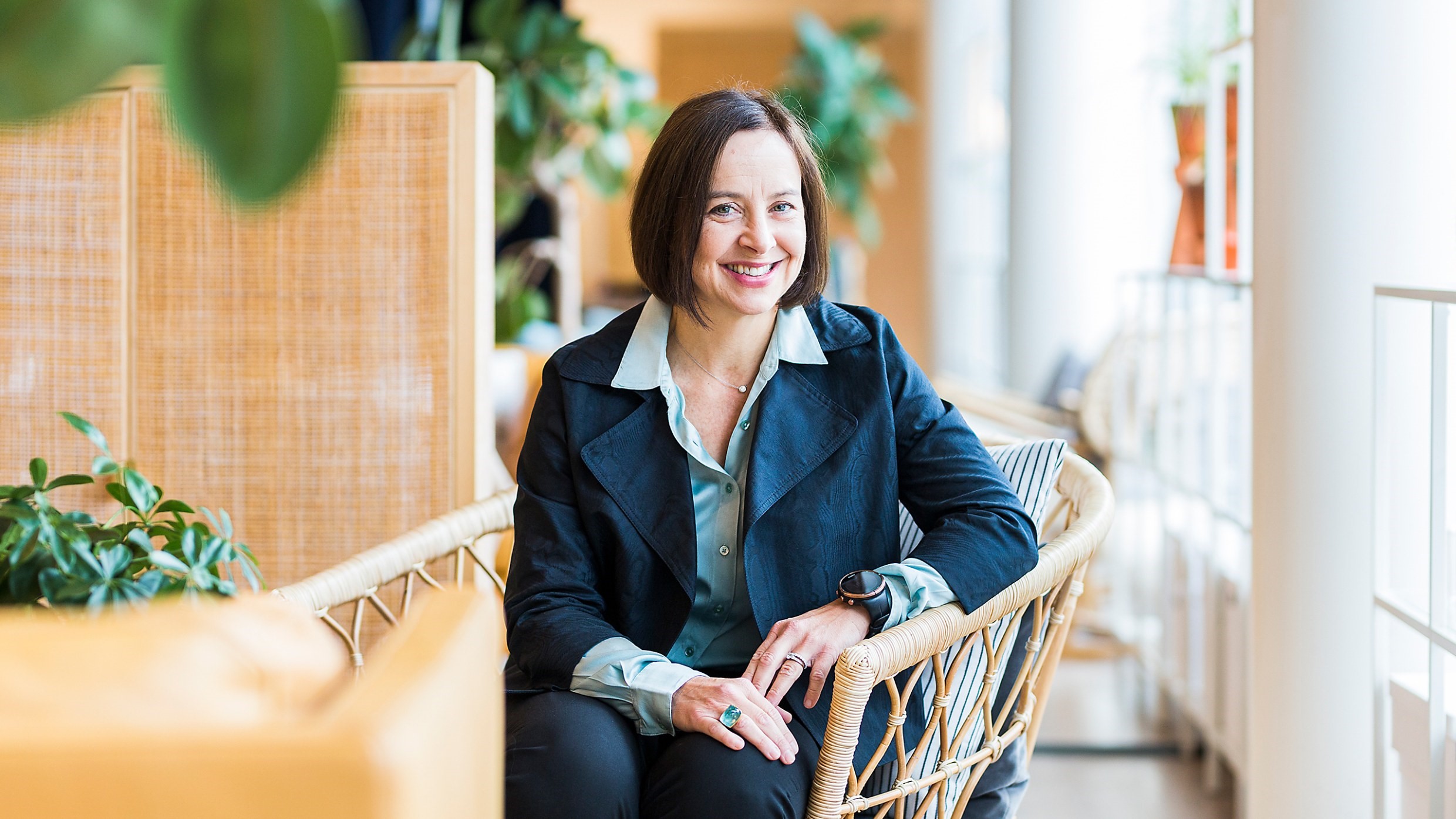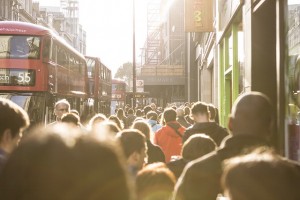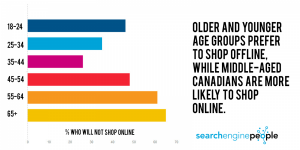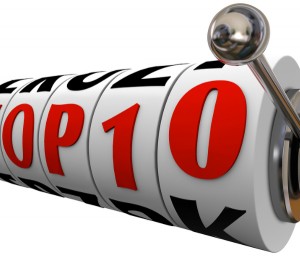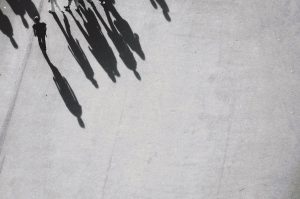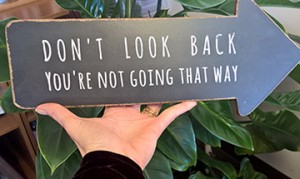By Adele Peters
As a growing number of people decide to switch careers to work on climate change, we’re running a series of interviews with people in climate-related jobs about their day-to-day work, from Microsoft’s Melanie Nakagawa and Google’s Kate Brandt to carbon removal-startup founder Mary Yap and climate tech investor Mia Diawara.
Ikea wants to be a circular company by the end of the decade, meaning all of its products can be repaired, refurbished, and eventually recycled, and it plans to use only renewable or recycled materials. The company has launched furniture buyback and repair programs. Circularity is one part of a plan to shrink emissions throughout its entire value chain; the company is also helping suppliers move to renewable energy, switching to electric delivery vehicles, and nudging customers to eat more plant-based food at its cafes in stores, among other things. We talked to Karen Pflug, chief sustainability officer at Ingka Group, which owns most global Ikea stores, about how Ikea is racing to cut its carbon footprint.
Fast Company: You’ve worked in a variety of roles, including as an innovation director at Nike and as the head of quality at Ikea. How long have you been interested in tackling the problem of climate change, and what led you to your current role as a chief sustainability officer?
Karen Pflug: First, I think it’s the best job in the world—the scope and the scale of the challenges that need solving and the contribution to make. But I studied as a textile designer many moons ago back in Manchester in the U.K., and my final year thesis in my degree was on eco-textiles and the rise of the importance of selecting the right materials to solve problems. That was in the early ‘90s. It was very much about trying to use design thinking to solve problems and make sure that natural materials and eco-textiles were used.
I had various roles in the fashion industry, which sort of open your eyes up to both the opportunities and some of the challenges. At Nike, I was involved primarily in innovation and driving high performance apparel for Olympic Games, the Rugby World Cup, and events like that—but also trying to bring in a sustainability perspective. Throughout my life as a designer, I’ve tried to marry my personal passion for protecting nature and love of the natural environment with design thinking and solutions for people.
FC: What’s a typical workday like for you now?
KP: I think in my role, it’s not about being an expert, but very much about driving transformational change. I have experts in all the areas of sustainability in our team. But for me, it’s about really landing sustainability across the business.
I see the CFO as my best friend. We had a meeting this morning, together with our finance team, about how we really help to ensure that some of the big investments and initiatives we have, particularly in the climate agenda, are built into our business planning and financial budgeting cycle.
So that’s one event. And then we had a meeting with a team from Globescan, who are doing research for us that we’ll be publishing later this year, with the insights from interviewing 33,000 customers in all of our markets to really understand their needs, hopes, and dreams around climate, around inequality, around nature, and all sorts of different topics related to our “People Planet Positive” agenda.
Last week, at Climate Week, we were really taking our advocacy role seriously there, and hosted our own action summit with events about climate capital, ESG, circularity, and other topics. And also exhibited solutions that are ready to scale now to solve the climate challenge.
FC: Ikea has an ambitious goal to become a circular business by 2030. Part of that means redesigning products. Can you share an example of a product that’s recently changed, like the 44-year-old Billy bookcase?
KP: Our team in Sweden does all the design and development, and we work extremely closely with them. The Billy is a good example because it is a classic, and perhaps the customer wouldn’t spot the difference—it’s a winner, and everybody loves it, so you don’t want to make it radically different from a visual point of view. But we looked at changing the veneer on the product so it’s more sustainable and better for recycling, and changing to a bio-based glue, which reduces the carbon footprint and also helps with recycling. And we made sure that the back is easier to disassemble and reassemble, so when people move, they don’t have the challenge of not being able to take it apart and build it again.
FC: With 9,500 different products, how does the design team tackle all of them? How do you deal with such a huge scale?
KP: It is a wide scope, but we break it down on the supply side to material types. We’re big users of wood, so we always make sure that our wood is sustainable, FSC-certified, but we’re also using recycled wood. We look at the textile category as a whole, because if you switch to recycled polyester or better cotton, for example, then that transforms loads of products because you do it at a material level. Bio-based glue is another good example: If you put that into every furniture range that we have, it has a really big impact on our CO2 emissions and the recyclability of the range.
The team looks at both the material aspect, and making sure that it’s designed to be able to be repaired, and has spare parts. Ingka was able to offer nearly 22 million spare parts last year to keep products from being thrown away.
FC: I saw that you’ve been testing sofa repair and refurbishment in Poland, and offering replacement parts so customers can keep furniture longer. Can you talk about what you’ve learned so far about what it takes to make that business model work?
KP: What we need to do when we’re testing anything like that is first of all, make sure that there’s a demand from our customers, and that it’s convenient and accessible and affordable for them. We know from all the research and from customers directly that it must make sense for them and make it a seamless experience. Then for us, we need to obviously minimize any footprint from doing that sort of thing. We need to solve the challenge in a way that makes good sense from both a circular and climate footprint point of view. And then it needs to be a good commercial offer as well. We are a business, and it needs to make good business sense too.
FC: If people keep products longer, or buy your products secondhand instead of new, how could that affect your bottom line?
KP: For me, having worked as a designer, nothing gives me more pleasure than products staying in use as long as possible and getting second, third, and fourth lives. We really try to build products that last. We have sofa covers, so that if a sofa gets stained or damaged, you can replace the cover instead of buying a new sofa. Our vision is a better everyday life for the many people. So we side with those that don’t have a lot of money. Our buyback program helps customers even more with affordability.
[The business can still grow because] there’s still plenty of opportunities in different markets. Sometimes you can think of these topics through Eurocentric or U.S.-centric eyes. In many of our markets, especially in Asia, there are people who are just coming into being able to buy their first IKEA bed or their first mattress or dining table. So there are lots of opportunities where people are just stepping in to buy those first pieces of IKEA furniture.
Then, of course, we’re also aware that we need to be much more resource-smart as a society, and look at different ways of growing, which include offering services that help keep products in use for longer. We feel there’s room for both.
FC: Ikea has a goal to become “climate positive” by 2030. Can you explain what that means?
KP: Ikea is committed to taking action on climate change in line with the Paris Agreement, and has set a commitment to be climate positive by 2030 by reducing more greenhouse gas emissions than the Ikea value chain emits. This will be achieved by taking action across three areas.
One, drastically reducing greenhouse gas emissions. Two, removing and storing carbon through forestry, agriculture, and products. We will explore and improve ways to store carbon through forest and agricultural practices. We will not purchase carbon offset certificates. Three, going beyond the Ikea value chain to contribute to additional reductions of greenhouse gas emissions in society. We will address a larger climate footprint than our own value chain by collaborating with our customers, suppliers and partners to reduce their total greenhouse gas emissions.
FC: I’ve written in the past about Ikea’s work to reduce food waste in the restaurants in your stores. Can you talk about how you’ve been able to make major cuts?
KP: We invested in what was then a startup business, Winnow, using AI to better understand what was getting thrown away in our restaurants every day. Knowledge is power. So then we were able to switch the mind-set of coworkers in the restaurants to really understand why things were going to waste. We managed by the end of last year to halve our food waste.
I think we were the first major international retailer to do that, and that saved over 20 million meals since 2017. A lot of people are surprised by how big we are in the food business. Everybody knows us for our furniture, but we have 600 million customers eating at our restaurants and bistros each year. So there’s a huge opportunity.
And nudging [customers to eat] plant-based food is a really big initiative for us as well. When I speak to people like John Rockstrom, the renowned scientist on nature and planetary boundaries, and ask what’s the biggest impact that individuals can have in their daily lives, he says that first, one is to talk about what’s happening and share your knowledge and insight. Second, it’s to switch to plant-based meals. You don’t have to be vegan, you don’t have to be fully vegetarian, but switch some of your meals out to plant-based.
We’re aiming to have 50% plant-based meals by 2025, and in some markets we’re almost at that already. We’ve got an average of 38% overall around the world, even in some very meat-loving markets. And we’ve made it affordable: We’re making the plant-based meals a lower price than the meat-based alternative, which means that we have a win-win.
FC: With a very short window of time left to cut emissions and still have a chance of limiting global warming to 1.5 degrees Celsius, how optimistic are you that the world can move quickly enough?
KP: It’s easy to feel a bit overwhelmed and think this is getting too hard. But what was so energizing about Climate Week actually was the sense of hope and optimism that was across the board last week. One was really getting nature on the agenda together with climate, which we saw last year, but was even stronger this year—that sense of having to work together on both.
The other was the realization that this is not something in the dim and distant future for scientists. It’s happening here and now and impacting everybody on a daily basis. But even with that being said, there was a sense that there is still time, and we have many of the solutions. We remain optimistic.
IKEA has chosen the optimistic stance based on agency and action and influence rather than blind optimism. And the fact that we can reach and support so many customers to make more sustainable choices in an affordable way. It doesn’t have to be more expensive to change your habits. We have an advocacy role as well, which means working together with other large organizations, governments, policymakers, NGOs, to drive the right behavior and changes that are required across society. This generation of leaders can make the choices to make a real difference, and that’s empowering as well.
FC: When you look at a goal like becoming a circular business, what challenges will you need to overcome? How much do you still need to figure out?
KP: We certainly don’t have all the answers, and I think it’s very much about leading in the unknown. We must work together collectively across the whole value chain in order for this to work, but also with collaborating with external partners as well; this isn’t an area to compete, it’s an area to come together. I think data and measurement will be key. We see ESG as a real enabler to drive transformational change across the business as well, rather than just a reporting tool. It will help to guide what’s material for us so that we can really focus on it.
I think my biggest success would be that my job is obsolete and that sustainability is so well embedded across the business that it’s just ingrained in daily business decisions and budgeting. A big focus of my work is that transformational change and leadership across the business.
(7)
